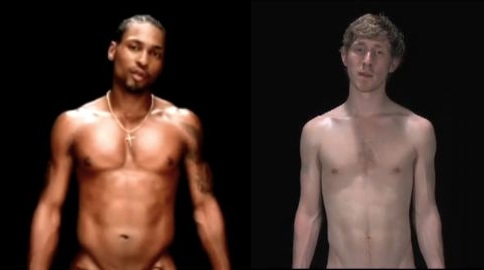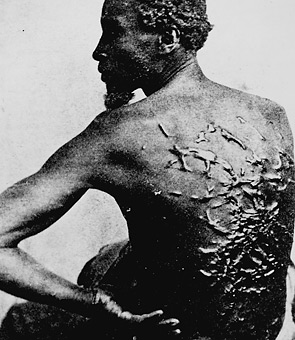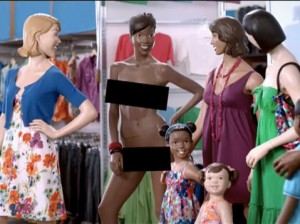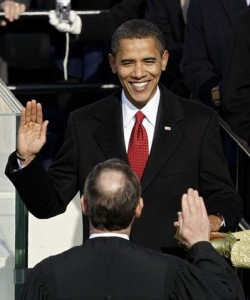Al Sharpton, dropping the bomb, and the morning’s most compelling statement, at Michael Jackson’s memorial service, the Staples Center, Los Angeles CA, July 7, 2009.
Educate and excite, inform and infuriate.
July 7th, 2009 — Black Music, Obituary, Pop Culture, Race, TV
Al Sharpton, dropping the bomb, and the morning’s most compelling statement, at Michael Jackson’s memorial service, the Staples Center, Los Angeles CA, July 7, 2009.
June 24th, 2009 — Film, Pop Culture, Race

Here’s my prediction: Transformers: Revenge of the Fallen will do huge first-week numbers, based on awe-inspiring trailer footage, then rapidly descend in flames from orbit, as people share with friends that the film is a stinking, heaving pile of constipated rhinoceros feces.
Transformers: ROTF, which opens today, is a narrative and conceptual mess. But this is neither surprising nor the greatest of its blames. It is, at critical moments, visually incomprehensible—and this from someone who considered the faceted clatter of the first film’s shifting multiplanes, at moments, symphonic. But this is the least of its faults.
 What offends is how gleefully the film endorses crude racism, serving up, not one, but two near-buckdancing, shiftless Black stereotypes—the sambots, as one reviewer adeptly punned, Skids, top and above right, and his twin (get this), Mudflap. Their insertion reveals how clearly insulated the white people who work at Paramount and for director Michael Bay appear to be in their racial supremacy. This also shows how out of touch they must be with developing, changing American and world tastes in entertainment. (That, without even getting into what will surely be Afrocentric outrage at key scenes of desecration.)
What offends is how gleefully the film endorses crude racism, serving up, not one, but two near-buckdancing, shiftless Black stereotypes—the sambots, as one reviewer adeptly punned, Skids, top and above right, and his twin (get this), Mudflap. Their insertion reveals how clearly insulated the white people who work at Paramount and for director Michael Bay appear to be in their racial supremacy. This also shows how out of touch they must be with developing, changing American and world tastes in entertainment. (That, without even getting into what will surely be Afrocentric outrage at key scenes of desecration.)
Let me put it this way: Continue reading →
June 4th, 2009 — Black Music, Race, Religion
Living in Harlem, I’ve been seeing Asian tourists coming uptown for years, and that would little suprise most people. What might get their attention, though, is that many of these sojourners don’t come here just to eat at Sylvia’s, or merely to sit in the back of Abyssinian Baptist Church and hear its choir’s masterful singing.
Instead, they want to be part of the show. That’s why, for some time, a number of Japanese tourists have been rolling up above 110th St to learn how to sing gospel. As The New York Times reported in 2000,
Over the last two years, hundreds of Japanese, primarily women, have trekked to Memorial Baptist for the Saturday workshop where veteran black gospel music instructors like Mr. [Terrance] Kennedy lead them in a crash course of clapping, stomping, singing and swaying. Tommy Tomita, who is Japanese and a longtime Harlem resident, started the workshop in 1998 to give friends a look at one of the oldest forms of black music. When the friends demanded more, he persuaded the church to teach them how to sing. Now the workshop is advertised in Japanese stores and community centers in New York, as well as throughout Japan.
Well, it looks like Japanese nationals weren’t the only ones taking the classes. Check out the Kirk Franklin-esque strains Korea’s Heritage Mass Choir bring, singing “My Desire,” above. Wow: Folk weren’t lying when they said that 125th St. is the crossroads of the world. I believe it! Now, stop gentrifying our neighborhood, white people.
May 18th, 2009 — Black Music, Film, Music Video, Race

Did white women have a rabid response to Asher Roth’s recent April Fool Day’s “remake”, right, of D’Angelo’s 2000 “Untitled (How Does It Feel?)”, left?
You know: The kind you’ve seen erupt over and over in Black females since D near-dangled his dingle on MTV. Even more, what’s weirder: That the pallid Roth would choose to mock himself this way, or that D’Angelo has taken nearly a decade to follow up his last album, Voodoo?
[via racialicious]
May 13th, 2009 — Business, Children, Politics, Race
 Just when you thought that the dreamlike logic of white supremacy couldn’t produce any further absurdities, the Caucasians drag another one out of the cornfield: According to the Associated Press, a study, conducted by Northwestern University’s Kellogg School of Management, to be published in the September edition of the journal, Psychological Science, has concluded that
Just when you thought that the dreamlike logic of white supremacy couldn’t produce any further absurdities, the Caucasians drag another one out of the cornfield: According to the Associated Press, a study, conducted by Northwestern University’s Kellogg School of Management, to be published in the September edition of the journal, Psychological Science, has concluded that
Black Fortune 500 CEOs with a “babyface” appearance are more likely to
lead companies with higher revenues and prestige than Black CEOs who look more mature, an upcoming study says.
In contrast with research showing that white executives are hindered by babyface characteristics, a disarming appearance can help Black CEOs by counteracting the stigma that Black men are threatening….
As the AP notes,
A babyface is characterized by combinations
of attributes, including a round face, full cheeks, larger forehead, small nose, large ears and full lips, the study says.
You know: The kind of visage typified by folks like American Express CEO Kenneth Chenault, above; E. Stanley O’Neal, right, former CEO of Merrill Lynch; almost everybody in this 2005 list of Black CEOs; or by this famed board chairman, after the jump:
April 22nd, 2009 — Black Music, Entertainment, Hip-Hop, Journalism, Media, Race
I don’t know how, until this very morning, I missed the April 15 New York Times profile of white rapper Asher Roth by former VIBE music editor Jon Caramanica. (“To Be Young, Rapping and White,” it was near sacrilegously titled.) But it was certainly worth the wait.
April 6th, 2009 — Art, Books, Design, Race
That, above, is the startling cover for colleague Ray Winbush’s new book, Belinda’s Petition: A Concise History of Reparations for the Transatlantic Slave Trade. (In the spirit of full disclosure, I wrote a blurb for the book.) Jerome Thompson, a staff artist at The Atlanta Journal-Constitution, fashioned the kiloword-saving graphic, no doubt inspired by this famed photo of a Maryland slave, below right.
 Belinda was an 18th century African woman, kept captive as a slave on the Ten Hills Plantation in Medford, Massachusetts. In 1782, explains Winbush, she
Belinda was an 18th century African woman, kept captive as a slave on the Ten Hills Plantation in Medford, Massachusetts. In 1782, explains Winbush, she
March 25th, 2009 — Books, Politics, Race
You’re looking at a photo, above, of a Coral Gables, FL Barnes & Noble window display of current books about Barack and Michelle Obama, their family, and President Obama’s historic run for the White House.
Dead center, as you’ve cerainly noticed, is a book titled Monkeys.
March 23rd, 2009 — Advertising, Fashion, History, Media, Race
So wrote Leroy Colson of Detroit MI this past Friday, in an e-mail to MEDIA ASSASSIN. The Lord and Taylor ad to which he refers, above, shows two models wearing pink, $150 Ellen Tracy trench coats.
Well, rather, one of them—the white one facing the camera—wears the coat. The other one—the Black one with her back to you—can’t help flashing a white man walking by with two dogs, both of which, if you look closely, have their eyes punningly trained on her putty-tat. The auburn-colored chow is even tugging like he’s gonna run after it.
 Colson tipped me to this image after he read this past Thursday’s post, “Are There Racists at Old Navy, or Do They Think That We’re Dummies?” That piece described what I perceived as the underlying racial code of the current Old Navy “Mid-Town Flash” commercial.
Colson tipped me to this image after he read this past Thursday’s post, “Are There Racists at Old Navy, or Do They Think That We’re Dummies?” That piece described what I perceived as the underlying racial code of the current Old Navy “Mid-Town Flash” commercial.
It’s the one in which a Black store mannequin, above right, has her dress ripped off, leaving her, except for matching black bars, naked before her co-mannequins, as the incident is played for laughs, including her own.
Exactly what are the chances that a random individual, reading an article critiquing the public racial display of the nude Black female body, would, that same day, be sent another, unrelated ad, also racially displaying the nude Black female body in public? (By racial, I mean anything said or done that involves white people with non-white people.)
Maybe the chances are high. Perhaps having noticed such an ad, a viewer’s heightened attention might readily be drawn to another different one. But, hey: Are there that many of these around? Is this a sub-category? I mean, we’re not talking about something akin to the millions of spreads featuring pictures of, say, mothers gently feeding their babies, here, right?
 Oops: I spoke too soon, suddenly recalling clothing maker Benetton’s notorious 1989 ad, right, something the company called part of its “campaign for equality between black and white,” proudly noting that, while controversial, it “represents the most-awarded image in Benetton’s advertising history.”
Oops: I spoke too soon, suddenly recalling clothing maker Benetton’s notorious 1989 ad, right, something the company called part of its “campaign for equality between black and white,” proudly noting that, while controversial, it “represents the most-awarded image in Benetton’s advertising history.”
Clothing, white customers, Black women’s bodies: There’s almost something antebellum about the mix. How much of this sort of advertising exists? Why does it? Why does it always involve a Black woman being eyed by a white man—or in this case, suckling one—but never the reverse? I’m just asking those questions rhetorically. I’m Black, and, like Thulani noted in her comments, I know that
If a black kid had ripped the dress of a “white” mannequin, it would have [been] read as hostile in a racial way but it would not evoke many similar images from the past– there is no tradition of exposing white women’s bodies on the slave block. [Eds. note: Though, clearly, the slave block and suckling white infants are deeply intertwined.] … If the company meant to imply that the dresses were so cute the customers were ripping them off the mannequins, having them all ripped would have made the point in a non-racialized way.
In other words, there’s a relationship between what’s not permitted in reality and what’s not permitted symbolically, and the reverse is also true. Which was my original point: I believe the line from the auction block to the display stand is unbroken.
So, while I can’t prove they’re directly related, for example, it’s not odd to me that, that, in a country which tends towards these kinds of displays, a 2000 Congressional report found that “Black women were nearly twice as likely to be strip-searched on suspicion of smuggling drugs as white men and women.”
In any event, it’s fascinating the response last week’s post provoked. Besides the comments, perhaps the best indicator of the nerve it hit is that, on the day it went out, twenty of the people following me on Twitter quit doing so. (My followers automatically get tweets linking them to each day’s new MEDIA ASSASSIN post.)
Twenty is far more than have ever canceled me in one day. (The highest before that was seven.) In fact, twenty is more than half of all my Twitter unfollows to-date. Hopefully, most of them will come back when they see this post.
March 19th, 2009 — Advertising, Fashion, History, Media, Race
“Images of Black women that are in fact ‘national, racial, and historical hallucinations’ have been ingrained into the collective conscience of the United states since slavery. Black women have been depicted either naked, generally in an ethnographic context, or as laborers, usually domestic, their social status playing a crucial role in the development of visual identity. With rare exceptions, representations of the Black woman in art and photography have followed these prescribed lines.”—Kimberly Wallace-Sanders, Skin Deep, Spirit Strong: The Black Female Body in American Culture (Ann Arbor: University of Michigan Press, 2003), p. 182.
“I ‘members when they put me on the auction block. They pulled my dress down over my back to my waist, to show I ain’t gashed and slashed up. That’s to show you ain’t a mean nigger.”—Lu Perkins, quoted by James Mellon, ed., Bullwhip Days: The Slaves Remember: An Oral History (New York: Avon Books, 1988), p. 292.
In his 1985 book on the Atlanta child murders, The Evidence of Things Not Seen, writer James Baldwin (1924-1987) spoke of the “ancestral, daily, historical truth of Black life in this country,” then paused to note that, in the context of the African-American experience, the words “ancestral and daily are synonyms.” That is, they have the same meaning.
 What Baldwin, right, meant by that is what Black people state when they, speaking of the same conditions, inelegantly say, “Samo, samo.” In other words, same old thing, nothing’s different in any meaningful way. “You try and get ahead and they change the rules.” Whatever Black people do, white supremacy merely adapts. Or, as I often urge, “Why would they change what works?”
What Baldwin, right, meant by that is what Black people state when they, speaking of the same conditions, inelegantly say, “Samo, samo.” In other words, same old thing, nothing’s different in any meaningful way. “You try and get ahead and they change the rules.” Whatever Black people do, white supremacy merely adapts. Or, as I often urge, “Why would they change what works?”
It is utterly fascinating to see how frustrating these contentions remain to many white people. Their notion of history is heroic; a series of climaxes that they, like chiseled, blood-spattered action heroes, have wrangled. (Baldwin, right, of course, knew this, and in the aforementioned quote added that “historical does not refer to that spotless mirror in which the bulk of White North Americans imagine they see their faces,” but the actual, true history that Black people have borne.)
 Of course, when it comes to action-packed heroics, nothing tops this past November’s election and inauguration, right, of the current president. It was an achievement which moved many white people to quickly declare the age of Obama “post-racial.” A greater number said, more generously, but no less absurdly, that, in the wake of seating a Black president, “America had changed forever.” Pundit after pundit, in kind, asserted America’s “maturity” with this act.
Of course, when it comes to action-packed heroics, nothing tops this past November’s election and inauguration, right, of the current president. It was an achievement which moved many white people to quickly declare the age of Obama “post-racial.” A greater number said, more generously, but no less absurdly, that, in the wake of seating a Black president, “America had changed forever.” Pundit after pundit, in kind, asserted America’s “maturity” with this act.
Doesn’t having white people write their own absolution preserve white supremacy as a system? All of this, to me, had the quality of, after a home invasion and robbery, agreeing to let the thief fill out one’s insurance claim and police report. At the very least, one can agree that having the people who have victimized you quantify your mistreatment invokes a sizable conflict of interest.
Though all of the above is deeply relevant, none of this was on my mind Tuesday night, when, while watching American Idol, I saw an Old Navy commercial, titled “Mid-Town Flash,” below, in which a white actor, with one brisk move, strips off a Black female mannequin’s dress, leaving the figure, above, save for modesty bars, completely naked, smiling, and being curiously observed by her fellow mannequins, or “supermodelquins,” as the group are called in the corporation’s series of ads.